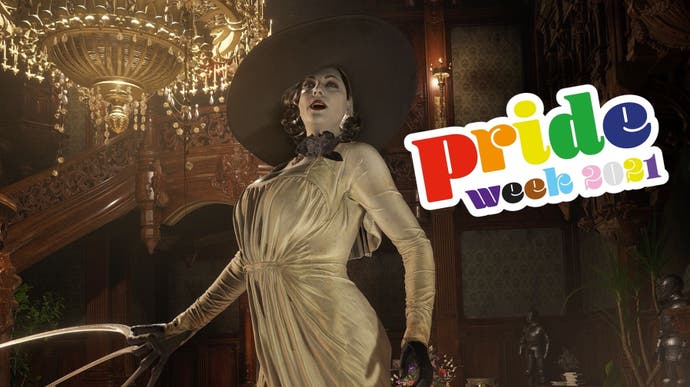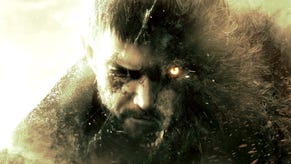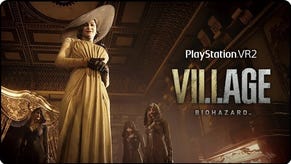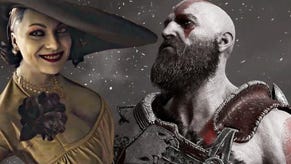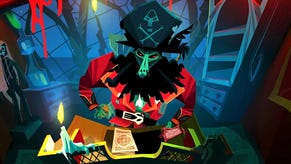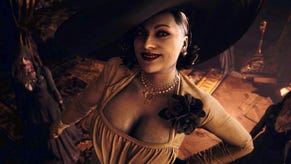Pride Week: Disidentification and Lady Dimitrescu - Taking Pride in Queer Thirst
Finding representation by reading against the grain.
Hello! All this week Eurogamer is celebrating Pride with a series of stories examining the confluence of LGBT+ communities and play in its many different forms, from video games and tabletop games through to live-action role-play. Next up, Dr Lloyd (Meadhbh) Houston on a certain Tall Vampire Lady and what they can teach us about the process of disidentification.
To say that the internet collectively lost its mind over all nine feet and six inches of Countess Alcina Dimitrescu would be an understatement almost as colossal as the Lady herself. As a quick glance at DeviantArt, TikTok, and Team Eurogamer's Let's Play videos will confirm, from the moment fans first laid eyes on Tall Vampire Lady, their desire to have her pursue them, pin them down, and step on one of the more sensitive parts of their anatomy was virtually irresistible.
Though straight, cis-gender men were far from immune to Lady D's vampiric charms, it was queer gamers who seemed to take her most enthusiastically to their hearts (and most willingly proffer her their throats). Indeed, in a recent TikTok AMA, Maggie Robertson - the mo-cap performer and voice actor who brought the hulking haemovore to life - aligned House Dimitrescu firmly with the cause of LGBTQIA+ rights with characteristic flair.
While this might seem like an open-and-shut case of lockdown lust finding a convenient outlet, before pre-emptively ruining this Pride Week take-over by consigning the world's queer gamers to Horny Jail, I want to explore the possibility that there is something deeper at stake in their reaction, something intimately bound-up with the aesthetics and politics of both queerness and the Gothic as genre. In doing so, I want to explore what the fan reaction to characters like Lady Dimitrescu and games like Resident Evil Village more generally can tell us about the ways in which queer people relate and respond to (notionally) cis- and heteronormative media. And, above all, as we face another year of cancelled celebrations, I want to invite all the queer people reading this to take Pride in the thirst that unites us, even as the pandemic keeps us apart.
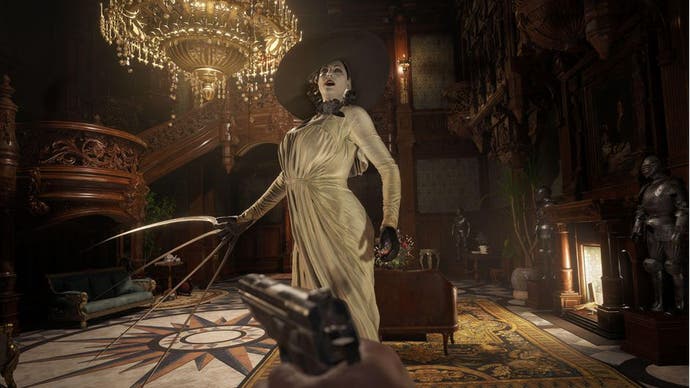
As a queer person living in a culture where positive representation is hard to come by at the best of times, it is often necessary to read against the grain of a book, film, or game in order to find a character with whom you identify or a narrative to which you relate. In academic circles, this process is called 'disidentification', a term coined by queer performance theorist José Esteban Muñoz to account for the ways in which marginalised people borrow, subvert, and play with aspects of the dominant culture from which they are conventionally excluded:
"Disidentification is about recycling and rethinking encoded meaning. The process of disidentification scrambles and reconstructs the encoded message of a cultural text in a fashion that both exposes the encoded message's universalizing and exclusionary machinations and recircuits its workings to account for, include, and empower minority identities and identifications. Thus, disidentification is a step further than cracking open the code of the majority; it proceeds to use this code as raw material for representing a disempowered politics or positionality that has been rendered unthinkable by the dominant culture."
As a queer person living in a culture where positive representation is hard to come by at the best of times, it is often necessary to read against the grain of a book, film, or game in order to find a character with whom you identify or a narrative to which you relate.
As a trans person reading, say, Mary Shelley's Frankenstein (1818), rather than identifying with Viktor Frankenstein and his Promethean pursuit of forbidden knowledge, I might align myself instead with the 'monster' and his rage against those ideological constructions of the 'natural' that would see him ostracised and vilified. Taking this disidentification further, I might follow the example of transgender theorist and historian Susan Stryker and build a performance piece around the novel, using Shelley's words to challenge those who claim that trans people 'war with nature' (or, as Stryker put it, to "roar gleefully away from [them] like a Harley-straddling, dildo-packing leatherdyke from hell". Seriously, read the transcript of her performance.)
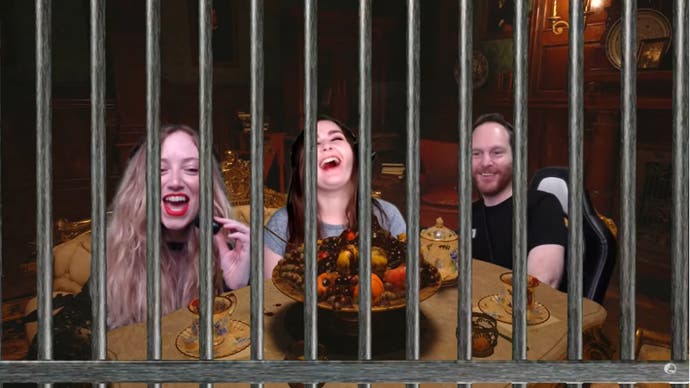
As this example suggests, disidentification is a crucial component of the cocktail of protest, performance, and play that marks Pride at its best, and few genres so readily invite this process of disidentification as the Gothic. In a discussion of 'The Monster and the Homosexual', film theorist Harry M. Benshoff notes how, in heteronormative cultural contexts, instances of "queerness" - those forces and figures that resist the existing social order and destabilise conventional categories - often serve to disrupt the "narrative equilibrium" of a story, in the process bringing about "a questioning of the status quo" on the part of its audience. In the case of the Gothic, Benshoff argues, this queerness is emblematised by the "outrageous" figure of the monster, whose "sadomasochistic" antics consistently serve to pull focus from the narrative's "banal and underdeveloped" protagonist(s) and disrupt their rational, bourgeois, heteronormative life-trajectory.
To return to the example of Resident Evil Village in the light of Benshoff's comments, it becomes clear that while the surface narrative is structured around a quest to reunite the Winters-es and, by extension, restore the nuclear family to its conventional position of social and cultural centrality, the real pleasure of the game actually resides in the relish with which it sunders the Winters family, from their home, from one another, and, with much-memed regularity, key parts of their anatomy. It's fair to say that a game in which a baby is crystallised and decanted into four labelled jars, and which features a set-piece in which a gigantic neonate engages you in a monstrous game of hide-and-seek, may not be uncomplicatedly invested in what queer theorist Lee Edelman calls "reproductive futurity".
Then there's Ethan himself, a protagonist so lacking in character that even the in-game collector's edition model of him depicts his face as a shadowy void; a husband so lacking in situational awareness that he seems to have been completely unaware that his wife had been replaced by a nineteenth-century cult leader; a man whose go-to response to being confronted with mind-bending horrors is to make dad-joke level quips (which, I have to admit, I kind of love). It's a testament to the almost breath-taking blah-ness of Ethan's character that when I reached the point in the game at which it is revealed that - spoiler alert - Ethan is just an ambulant slab of mould, my primary reaction was, 'Oh, yeah, that tracks.' This is all to say that while we may be experiencing Resident Evil Village through Ethan's eyes (though, thankfully, not his hands), we almost certainly aren't identifying with him.

In contrast to the 'banality' of Hands Mould Man (as one commenter on a recent Eurogamer stream dubbed him), Lady D embodies multiple facets of the "outrageous", narratively destabilising queerness identified by Benshoff. Literally larger than life, she strains against the confines of normative social order (and the door to the Save Room), mixing blood-play with an appreciation for vintage wine, fashioning a chosen family of 'daughters' from deceased local women/sentient clusters of flies, and violently decrying the presence of the 'man thing' (Ethan) wherever she encounters him.
And, while her prolonged life, regenerative powers, and sanguinary tastes are technically a by-product of exposure to the Cadou parasite, to all intents and purposes, Lady D embodies the seductive allure of the queerest of all Gothic monsters, the vampire.
To make the unavoidable pun, for as long as they have been a feature of popular culture, vampires have been objects, and avatars, of a particularly queer kind of thirst. In Joseph Sheridan Le Fanu's Carmilla (1871-2), the studious and virtuous teenage protagonist, Laura, finds herself left "trembling" by the "hot lips" and "soft kisses" of the eponymous vampire (also, seemingly, a teenage girl), who haunts her dreams and promises to teach her "the rapture of that cruelty, which is yet, love". In Bram Stoker's Dracula (1897), the titular Count strands the recently engaged Jonathan Harker in rural Romania, vamps Harker's fiancée Mina, and uses wicked sex magic to wend his way into the couple's nuptial bed for a thinly-veiled threesome. More recently, in Tony Scott's The Hunger (1983), Catherine Deneuve and David Bowie stretch the boundaries of 'ethical' non-monogamy by seducing and vamping other couples together, before eventually forming a club-cruising vampiric polycule with Susan Sarandon.

The seductive fascination vampires such as Carmilla, the Deneuve-Bowie-Sarandon sex hydra, and our very own Lady Dimitrescu exert on audiences and protagonists alike is a key component of their disidentificatory potential. It tempts us, against the normative flow of the narrative, to envisage forms of desire and pleasure divorced from the logic of reproductive heterosexuality. It calls us to join a community defined by strong aesthetic choices, a propensity towards polyamory, and a vexed relationship with the dominant culture. It invites us, in short, to be more than a little queer. And isn't that what Pride's all about?
So, the next time you find yourself secretly wishing that a giant, queer-coded creature of the night would grab you by the throat, step on you, or run you through with their tantalisingly sharp claws, don't punish yourself (unless you're into that sort of thing). Just remind yourself that you are actually "scrambl[ing] and reconstruct[ing] the encoded message of a cultural text in a fashion that both exposes the encoded message's universalizing and exclusionary machinations and recircuits its workings to account for, include, and empower minority identities and identifications"... You filthy animal.
